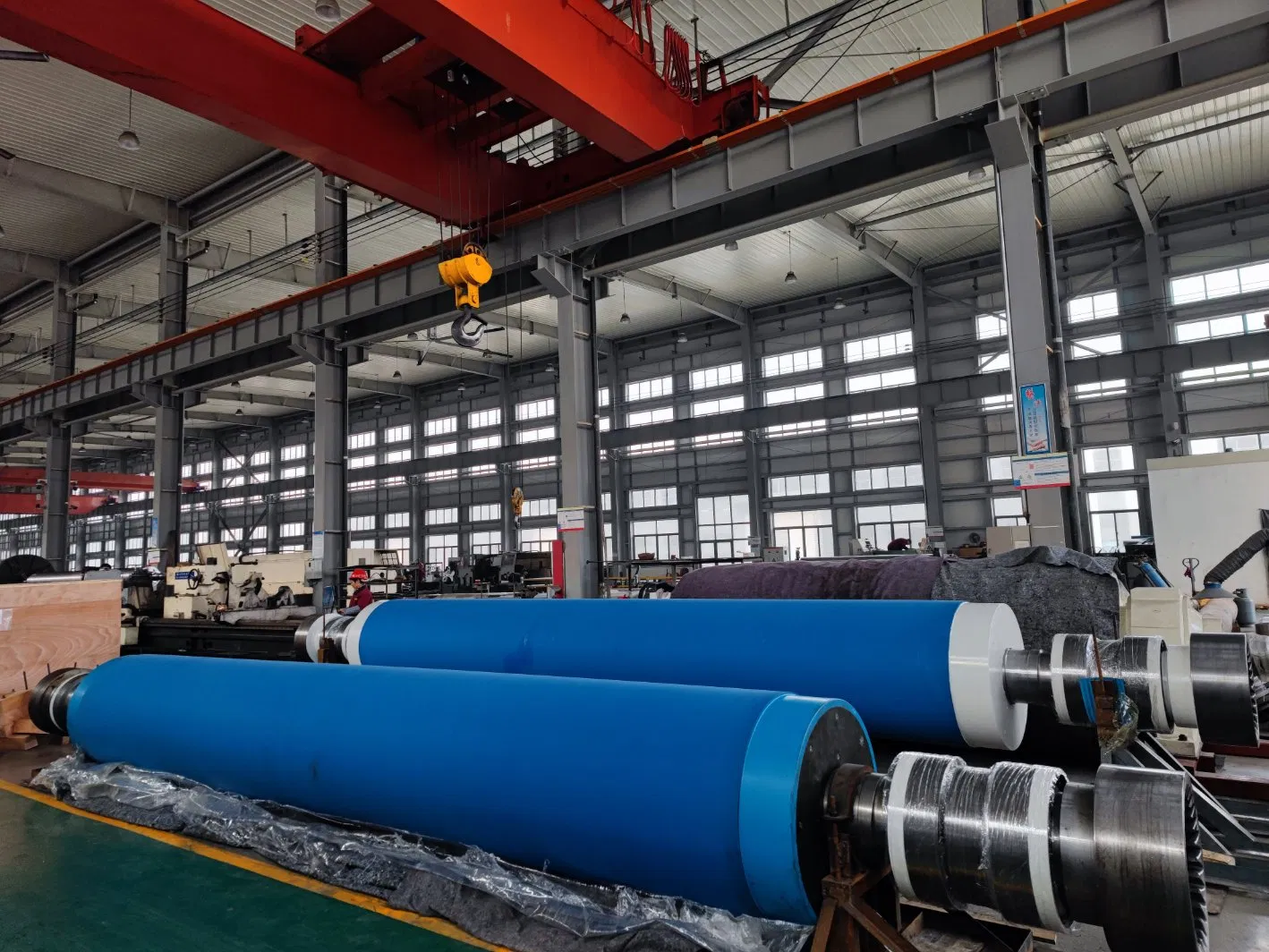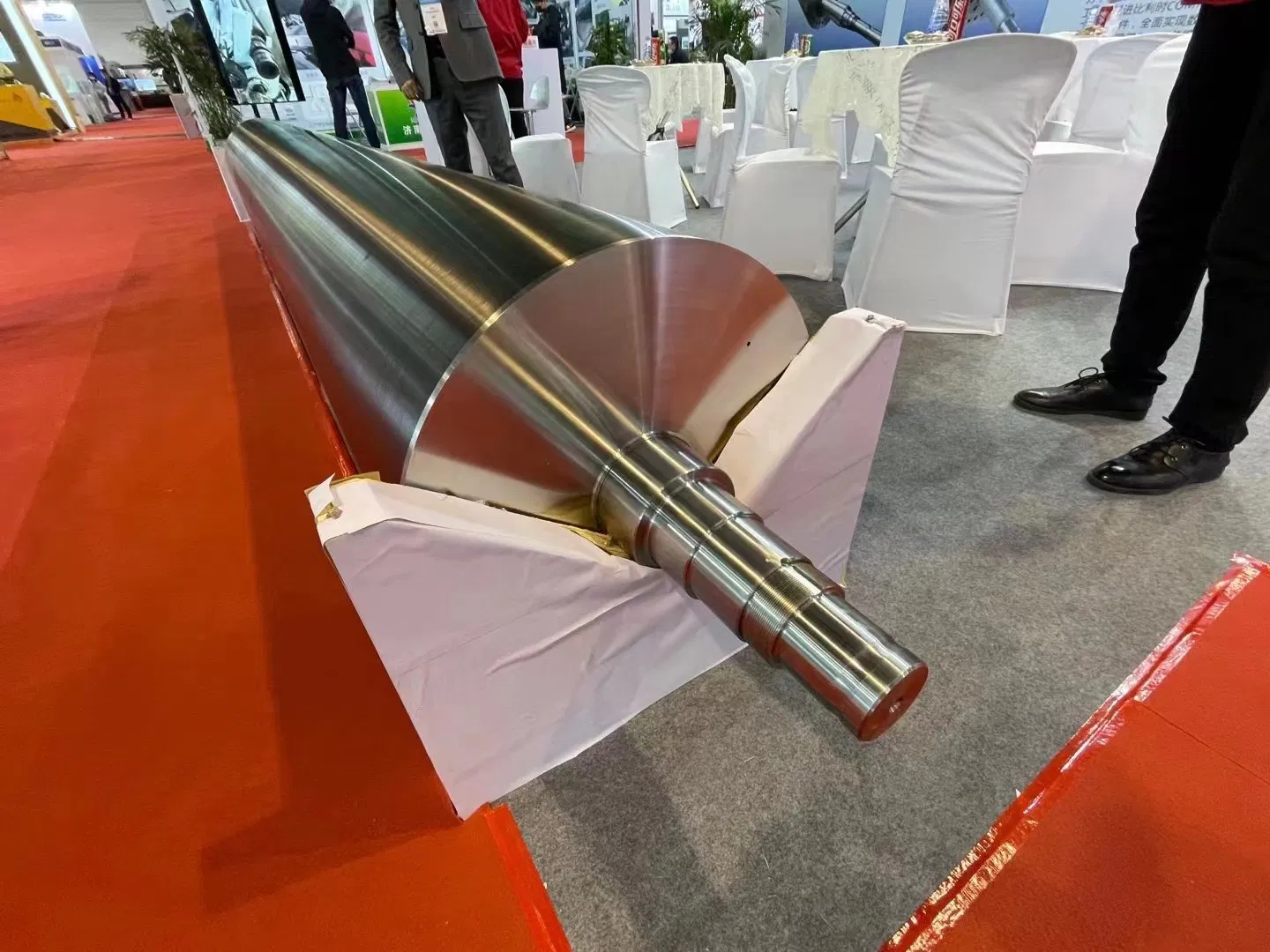To be honest, in the intricate world of paper manufacturing, every component plays a critical role in the final product's quality and the efficiency of the production line. Among these, the unsung heroes are often the surfaces that interact directly with the paper web: the machine rolls. Specifically, the advent and continuous improvement of high-release paper machine roll coatings have revolutionized how paper is made, mitigating common issues like sticking, tearing, and accumulation of debris. Frankly speaking, without these specialized coatings, modern high-speed paper machines would struggle to achieve the throughput and consistency demanded by today's market.
These coatings are not just a luxury; they are a necessity, acting as a crucial interface that ensures the smooth, uninterrupted flow of the paper web through various stages of the machine, from forming and pressing to drying and calendering. Have you ever wondered what makes paper production so seamless despite the wet, sticky nature of the pulp? It's often the sophisticated chemistry and engineering behind these very coatings. In my experience, the difference between a problematic, stop-and-go operation and a smooth, continuous run often boils down to the effectiveness of the roll surfaces.
The Crucial Role of High-Release Coatings in Paper Manufacturing
The paper machine environment is notoriously challenging. It's a high-temperature, high-humidity, and often chemically aggressive setting where paper fibers, binders, and additives constantly interact with machine surfaces. This interaction, if uncontrolled, leads to a phenomenon known as "sticking," where the paper web adheres to the rolls. This sticking can cause a cascade of problems: web breaks, sheet defects, reduced machine speed, and increased downtime for cleaning. This is precisely where high-release paper machine roll coatings step in, providing a non-stick surface that prevents adhesion and facilitates the clean separation of the paper web from the roll. Interestingly enough, the concept is simple, but the execution is complex. These coatings are engineered at a microscopic level to minimize the surface energy of the roll, making it difficult for materials to bond to it. Think of it like a high-tech non-stick pan, but on an industrial scale, operating under immense pressure and heat. The immediate benefit is a significant reduction in web breaks, which directly translates to higher operational efficiency and increased output. Many experts agree that investing in superior roll coating solutions for sticky applications is one of the most impactful upgrades a mill can make.Understanding the Mechanics of Release
The effectiveness of a high-release coating hinges on several key properties: * Low Surface Energy: This is paramount. Materials with low surface energy naturally repel other substances, preventing adhesion. * Chemical Inertness: The coating must resist chemical attack from the various additives and process chemicals used in papermaking, ensuring its integrity and longevity. * Thermal Stability: Given the high temperatures in drying sections, the coating must maintain its release properties without degrading. * Mechanical Durability: Rolls are subjected to constant abrasion and pressure. The coating must be tough enough to withstand these forces without wearing away prematurely. The right balance of these properties ensures that the roll surface remains clean, promoting consistent paper quality and minimizing the need for frequent cleaning and maintenance.
Understanding the Science Behind High-Release Properties
The science behind high-release paper machine roll coatings is a fascinating blend of material science, chemistry, and surface engineering. While various materials can be used, fluoropolymers, silicones, and certain ceramic composites are among the most common due to their inherently low surface energy and excellent chemical resistance. These materials are applied using sophisticated techniques like thermal spraying, plasma coating, or specialized painting methods, ensuring a uniform and durable layer.Types of High-Release Coatings and Their Applications
Different sections of a paper machine present unique challenges, and thus, different coating formulations are often employed. * Fluoropolymer Coatings (e.g., PTFE, PFA): These are perhaps the most well-known for their exceptional non-stick properties. They are widely used in dryer sections, size presses, and calenders where stickiness from starch, sizing agents, or wet paper is a major concern. Their chemical inertness makes them ideal for resisting a wide range of process chemicals. * Silicone Coatings: Known for their flexibility and excellent release characteristics, silicones are often used in applications where a softer, more conformable surface is beneficial, such as certain press rolls or guide rolls. They can also withstand high temperatures, though generally less than fluoropolymers. * Ceramic/Polymer Composites: These coatings combine the hardness and wear resistance of ceramics with the release properties of polymers. They are excellent for rolls requiring both durability and non-stick attributes, offering a longer lifespan in abrasive environments. * Hybrid Coatings: Increasingly, manufacturers are developing hybrid coatings that combine the best features of different materials to address specific challenges, offering tailored solutions for unique mill conditions. The choice of coating material and application method is critical and depends on factors like the type of paper being produced, the specific roll's function, operating temperatures, and the presence of aggressive chemicals. Optimizing paper machine efficiency with coatings often involves a detailed analysis of these factors.Key Benefits: Revolutionizing Efficiency and Quality
The impact of effective high-release paper machine roll coatings extends far beyond simply preventing sticking. They are fundamental to achieving higher levels of operational efficiency, improving product quality, and reducing overall operating costs. It's worth noting that the initial investment in these coatings is quickly offset by the tangible benefits they provide.Enhanced Productivity and Reduced Downtime
The most immediate and significant benefit is the drastic reduction in web breaks. Each web break means stopping the machine, clearing the paper, and rethreading the web – a process that can take minutes to hours, leading to substantial production losses. By preventing sticking, high-release coatings ensure a continuous run, maximizing uptime and throughput. This also allows mills to run their machines at higher speeds, further boosting productivity. In my experience, a mill that transitions from uncoated or poorly coated rolls to high-performance release coatings often sees an immediate and measurable increase in production volume.Improved Paper Quality
Sticking can lead to various defects in the paper, such as picking, fiber pull, and uneven surface finishes. When the paper separates cleanly from the roll, these defects are minimized, resulting in a more uniform, higher-quality product. This is particularly important for specialty papers or those requiring a pristine surface for subsequent printing or converting processes. Enhanced release properties for paper production directly contribute to a superior end product.Lower Maintenance Costs and Longer Roll Lifespan
Rolls without effective coatings accumulate debris, requiring frequent cleaning, which is labor-intensive and contributes to downtime. High-release coatings keep rolls cleaner for longer, reducing the frequency and intensity of cleaning cycles. Furthermore, by preventing sticking and the associated stress on the rolls, these coatings can extend the lifespan of the rolls themselves, delaying the need for costly regrinding or replacement. This translates to significant savings in maintenance labor, spare parts, and energy consumption.
Application, Maintenance, and Longevity of Coated Rolls
The performance of high-release paper machine roll coatings isn't just about the material; it's also about the application process and subsequent maintenance. A poorly applied coating, regardless of its inherent quality, will fail prematurely. Similarly, even the best coating requires proper care to achieve its maximum lifespan and performance.Precision Application Techniques
Applying these specialized coatings is a precise art and science. Techniques vary depending on the coating material and the roll's specific requirements, but common methods include: * Thermal Spraying: This involves melting the coating material and spraying it onto the roll surface at high velocity, creating a dense, durable layer. * Plasma Coating: Similar to thermal spraying but uses a high-temperature plasma jet, allowing for very fine and uniform layers, often used for ceramic or composite coatings. * Roll-to-Roll Coating: For certain flexible coatings, the material might be applied as a liquid or film and then cured. * Chemical Vapor Deposition (CVD) / Physical Vapor Deposition (PVD): These advanced techniques create extremely thin, highly uniform, and durable coatings at a molecular level. Regardless of the method, thorough surface preparation of the roll (cleaning, grit blasting, priming) is essential to ensure excellent adhesion of the coating.Best Practices for Maintenance
Even with the best coatings, proper maintenance is key to longevity. * Regular Cleaning: While coatings reduce sticking, some buildup can still occur over time. Regular, gentle cleaning with appropriate methods and chemicals is necessary. Harsh abrasives or strong solvents can damage the coating. * Inspection: Periodic inspection for signs of wear, damage, or delamination allows for timely repairs or recoating before major issues arise. * Operational Parameters: Adhering to recommended operating temperatures and pressures helps preserve the coating's integrity. Exceeding these limits can degrade the coating prematurely. * Handling: Careless handling during installation or removal can easily damage the coating. Proper lifting equipment and protective measures are crucial. I've found that mills that implement a proactive maintenance schedule for their coated rolls consistently achieve longer coating lifespans and better overall machine performance.Addressing Challenges and Future Innovations in Roll Coatings
While high-release paper machine roll coatings offer immense benefits, the industry isn't without its challenges. The constant drive for faster machine speeds, new paper grades, and more sustainable production methods puts continuous pressure on coating technology.Common Challenges Faced
* Wear and Abrasion: Despite their durability, coatings can still wear down over time, especially in highly abrasive environments or with certain paper grades containing fillers. * Chemical Attack: While resistant, some aggressive chemicals or prolonged exposure can eventually degrade coating performance. * Cost: High-performance coatings and their application can be a significant upfront investment, though as discussed, the ROI is typically very high. * Repairability: Repairing damaged coatings in situ can be challenging, often requiring the roll to be removed and sent to a specialized facility.The Horizon of Innovation
The future of roll coatings is exciting, driven by the need for even greater performance and sustainability. * Nanotechnology: Researchers are exploring the use of nanomaterials to create coatings with enhanced hardness, improved release properties, and self-cleaning capabilities. Imagine a roll that actively repels contaminants! * Smart Coatings: Coatings that can monitor their own condition (e.g., wear, temperature) and provide real-time data to operators are on the horizon, enabling predictive maintenance. * Environmentally Friendly Formulations: There's a growing emphasis on developing coatings with reduced environmental impact, using fewer harmful chemicals in their production and application. * Tailored Solutions: As paper grades become more specialized, so too will the demand for highly customized coating solutions designed for very specific applications and challenges. This includes coatings designed specifically for recycled pulp, which often contains more contaminants. The continuous evolution of these technologies promises even greater efficiencies and quality improvements for the paper industry.Conclusion: The Indispensable Future of High-Release Technology
In summary, high-release paper machine roll coatings are far more than just a surface treatment; they are a fundamental component enabling the modern paper industry to operate at peak efficiency and produce high-quality products consistently. From preventing costly web breaks and reducing maintenance downtime to enhancing the final paper's quality, their impact is profound and undeniable. As the paper industry continues to innovate, pushing the boundaries of speed, sustainability, and product diversity, the role of advanced roll coatings will only become more critical. The ongoing research and development in new materials and application techniques promise an even brighter future, ensuring that paper machines can continue to meet the world's ever-growing demand for paper products with unparalleled efficiency. The journey of optimizing paper machine efficiency with coatings is a continuous one, and it's a testament to the ingenuity of material science.For more detailed information, please visit our official website:high-release paper machine roll coatings
About the author: Dr. Evelyn Reed is a materials science expert specializing in industrial surface technologies. With over 15 years of experience, she has dedicated her career to developing advanced coating solutions for challenging manufacturing environments, particularly in the pulp and paper industry. Her work focuses on enhancing operational efficiency and product quality through innovative surface engineering.


